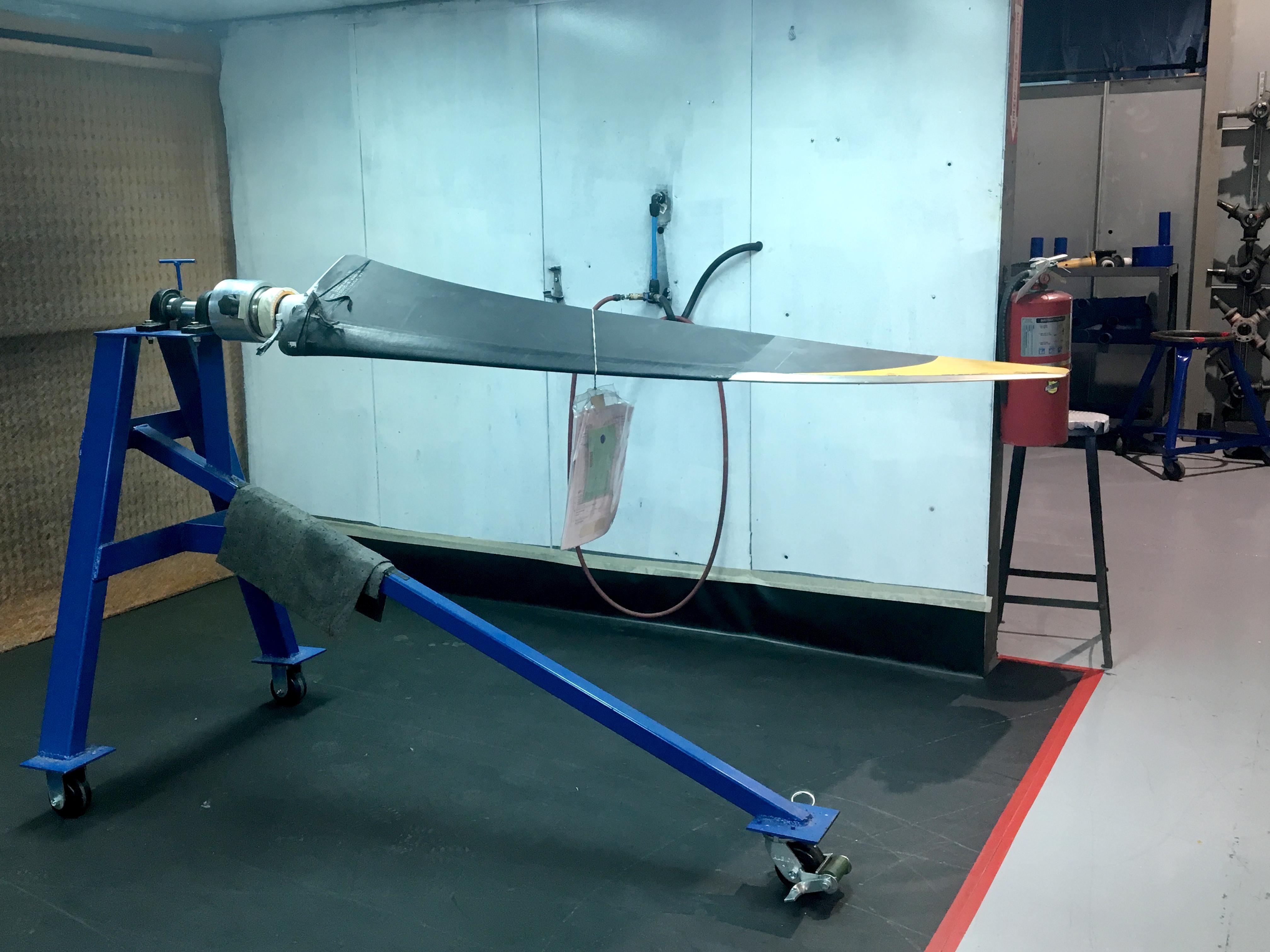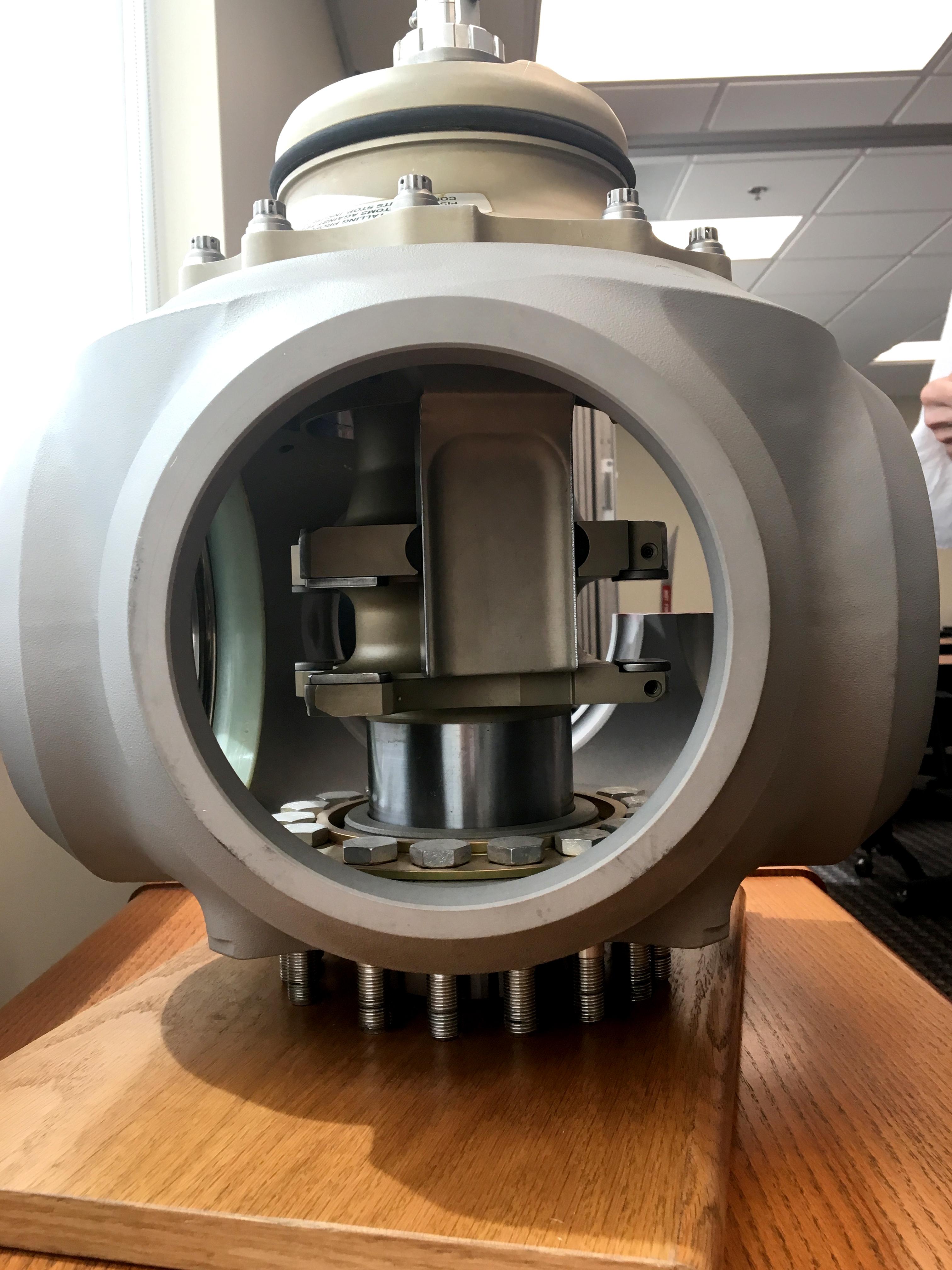The Inside Look At Aircraft Propeller Service
June 29, 2016
Compression Wrap Services
APS, a licensed UTAS licensed repair facility for the Americas and Asia, is one of two licensed sources worldwide for 247F and 568F compression wrap services, which are required at each major inspection (10,500 flight hours or seven years).

The Facility
InsideMRO Editor-in-Chief Lee Ann Shay talks with Randy Burke, vice president of operations for APS, at the beginning of the tour. The facility, opened in 2015, is 46,000 ft2.

Hamilton Sundstrand 568F
The six-blade Hamilton Sundstrand 568F propeller assembly (pictured) is installed on ATR42, ATR72 and CASA 295 aircraft. Blades feature a metal “tulip” surrounded by foam and covered with Kevlar.

Training Room
Inside each blade is an aluminum spar surrounded by a hardened foam (pictured). These physical parts are found in APS's training room, which accommodates 12, for staff and third parties.

The Hub
The hub, where propeller blades connect, is a critical inspection area for propeller assemblies. This one is used for training at Aircraft Propeller Services.

Propeller Shank
The propeller shank on legacy blades, such the 14RF and 14SF found on Saab, CASA and older-model ATRs and DHC-8s, receives 20 tons of force in a centrifrigal load, yet only 0.004 in. of damage can be removed for repairs. Aircraft Propeller Services uses an optical comparator to verify the shank dimensions.

APS Certifications
The FAA-approved repair station has an indefinite expiration EY2R811K, is 145.5126 European Aviation Safety Agency-approved, is a UTC-licensed repair source and is also ATR-approved. This year, the facility is undergoing AS9100 certification.

Magnetic Particle Inspection
Propeller parts are inspected through multiple methods, one being magnetic particle inspection (MPI). The inspector runs a current through the magnetized component, covers it with "iron-infused" shavings and is able to identify cracks or faults through ultraviolet light. Jon Burg, APS's nondestructive test technician, said sometimes when he receives parts, he is not told what the potential concern is, so that his inspection is completely unbiased. Watch a video of an inspection.

Machine Capabilities
When APS opened its new facility north of Chicago in 2015, it was able to have all of its machines and technology under one roof. This includes three-axis and five-axis CNC-machining capability, which would also allow it to manufacture parts.

Compression Wrap Services
APS, a licensed UTAS licensed repair facility for the Americas and Asia, is one of two licensed sources worldwide for 247F and 568F compression wrap services, which are required at each major inspection (10,500 flight hours or seven years).

The Facility
InsideMRO Editor-in-Chief Lee Ann Shay talks with Randy Burke, vice president of operations for APS, at the beginning of the tour. The facility, opened in 2015, is 46,000 ft2.

Hamilton Sundstrand 568F
The six-blade Hamilton Sundstrand 568F propeller assembly (pictured) is installed on ATR42, ATR72 and CASA 295 aircraft. Blades feature a metal “tulip” surrounded by foam and covered with Kevlar.

Training Room
Inside each blade is an aluminum spar surrounded by a hardened foam (pictured). These physical parts are found in APS's training room, which accommodates 12, for staff and third parties.

The Hub
The hub, where propeller blades connect, is a critical inspection area for propeller assemblies. This one is used for training at Aircraft Propeller Services.

Propeller Shank
The propeller shank on legacy blades, such the 14RF and 14SF found on Saab, CASA and older-model ATRs and DHC-8s, receives 20 tons of force in a centrifrigal load, yet only 0.004 in. of damage can be removed for repairs. Aircraft Propeller Services uses an optical comparator to verify the shank dimensions.

APS Certifications
The FAA-approved repair station has an indefinite expiration EY2R811K, is 145.5126 European Aviation Safety Agency-approved, is a UTC-licensed repair source and is also ATR-approved. This year, the facility is undergoing AS9100 certification.

Magnetic Particle Inspection
Propeller parts are inspected through multiple methods, one being magnetic particle inspection (MPI). The inspector runs a current through the magnetized component, covers it with "iron-infused" shavings and is able to identify cracks or faults through ultraviolet light. Jon Burg, APS's nondestructive test technician, said sometimes when he receives parts, he is not told what the potential concern is, so that his inspection is completely unbiased. Watch a video of an inspection.

Machine Capabilities
When APS opened its new facility north of Chicago in 2015, it was able to have all of its machines and technology under one roof. This includes three-axis and five-axis CNC-machining capability, which would also allow it to manufacture parts.

Compression Wrap Services
APS, a licensed UTAS licensed repair facility for the Americas and Asia, is one of two licensed sources worldwide for 247F and 568F compression wrap services, which are required at each major inspection (10,500 flight hours or seven years).
Get an inside look at Aircraft Propeller Service's facilities and equipment. Located in Lake Zurich, Illinois, APS provides propeller system maintenance services include regional turboprop and general aviation MRO.








